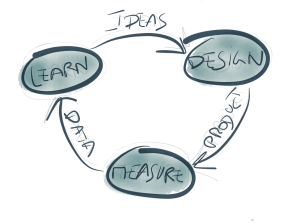At City Yoga the other day our instructor, Anthony Benenati began the class by reciting the 5 Yoga Sutras known as Kleshas or stains that prevent students from achieving enlightenment. The Kleshas, Anthony told the class, are: Ignorance, Ego, Attachment, Aversion and Fear of losing one’s sense of self.
When I heard the explanation of each Klesha it reminded me of the five biggest misconceptions prospective clients at Kluge have when it comes to their digital presence. They are as follows:
1. Avidya – Ignorance. Typically represented by individuals who have never had a website or had a website built over ten years ago by an intern who has since disappeared. A Google survey from July 2012 calculated that more than half the small businesses in the US are still without a basic website. http://siteswan.com/2012/07/31/percentage-of-small-businesses-without-a-website/ Often the Avidya client is reluctantly entering the digital realm, pushed by a friend or advisor to build or revamp their aging website. They do not know what they do not know which makes a meaningful conversation with a design agency very challenging. Their two biggest fears are cost and labor. It will cost them too much and will create more work for them once the site has been deployed. What they don’t realize is the benefits that can be realized even with a very basic digital strategy. The pride and effort they have placed in building up their business should be reflected through their web presence. More than a calling card a businesses website is how customers will discover, assess and interact with you and how you in turn, can engage your customers.
With over three billion local search queries in any given month on Google alone, no business can afford not to be on the web. And with 20% of traffic coming from smart phones your site has to be mobile friendly. A good website will work for you 24/7 and knows no geographic boundaries. If you are not flexing your digital muscle, your competition certainly is.
Baby steps and patience is required for these clients. Start out with very simple goals and reassure them that nobody has all the answers. There is nothing to be ashamed about being ignorant as we all must start somewhere. But don’t let it paralyze you. Fear can be overcome, in action is inexcusable. Avidyas typically are extremely cautious and move very slowly. If you can understand the fundamental sales process of their business, explain how even meager increases in their sales process will make their efforts worthwhile you can begin to allay their fears.
2. Asmita – Ego This individual knows exactly what they want because their neighbor’s kid who aspires to be a graphic designer has laid it all out for them. They just need to know how much it is going to cost and how quickly you can get it done. Alternatively, the Asmita client has built the site themselves which now just needs a few minor touch ups, which often translates as the site is broken and full of structural flaws.
Asmita’s are challenging for a web designer; anyway you move you will be damned. Basically their site will need to be re-built from scratch. Hopefully there will be a few existing design elements that can be salvaged. A good way to maneuver this kind of client is to highlight the need to move to a “responsive” CMS platform, which will enable the site to adjust to any browser out there be it a mobile phone, tablet or desktop.
Unfortunately starting from scratch inherently means billing more hours than the “Asmita” client is typically willing to pay for, which places you in the predicament of working within their restricted budget and blinkered parameters. Nine times out of ten a good design agency should stick to their higher aesthetic standards and let the client seek help elsewhere if they insist on cutting corners and compromising their web presence for the sake of a couple of hundred dollars..
3. Raga – Attachment. The Raga client typically has a website that is a jumbled mess. They are big believers in the more the merrier and try to cram as much content on their home page as they possibly can. The Raga client views their site as if it were exclusive commercial real estate and they want to build as many structures on it as they can think of. This includes at least ten tabs that run across the top banner and about six forms begging for the browser’s attention.
The Raga client needs to be exposed to the school of simplicity championed by the likes of Steve Jobs’ who said, “Simple can be harder than complex: You have to work hard to get your thinking clean to make it simple. But it’s worth it in the end because once you get there, you can move mountains.” And Leonardo Da Vinci’s, who stated “Simplicity is the ultimate sophistication.”
Often these Raga clients are well intentioned and very enthusiastic. If you can harness there energy and point them towards some sites whose performance improved the more they were stripped down, you are along way towards building a productive partnership.
4. Dvesha – Aversion. The Dvesha client is either a perfectionist who can never launch his site because he has just one more tweak to make before it is “totally perfect” or an obsessed worrywart who spend months studying the web looking at different sites and never coming to any concrete conclusions. Regardless the type, they both struggle mightily getting on to first base.
Once again, patience is in order. You have to win these client’s trust and show them examples of sites that have been conceived, mapped out and launched in a matter of weeks rather than years. A website and your digital strategy should be seen as continually evolving and having great fluidity. It is never going to be perfect and mistakes will be made, but everything can be improved upon and enhanced, PROVIDING, you get to launch. The worst thing you can do is sit on your hands and worry, because that is not going to help anybody.
5. Abhinivesha – self preservation or fear of death or losing one’s sense of self. This final Klesha is very fitting when explaining the need for denizens of the web to remove themselves and their preconceived ideas from their website and let their customers and digital community tell them what is right and what resonates. This is often one of the most challenging attitudes for novices to adopt as it means removing themselves from the center of their digital world and letting their network of friends, fans and followers tell them what is working. To adopt this approach you have to admit up front that you don’t have all the answers and you are willing to let outside influences steer your direction no matter how certain you are of your own convictions about your own company and your brand.
The clients who admit they “don’t know” what the results will be in regards to their digital project are the ones we relish working the most as we are of a similar mindset. It is only by letting your mobile app or platform or website see the light of day that you can begin to understand if it resonates with your clients and you can begin to tweak and adapt accordingly. And so by removing yourself and your assumptions of what you think is going to work you can more easily and quickly see what does work and by doing so start to become one with your digital realm.
In Yoga recognizing and coming to terms with each Klesha helps you to recognize and remove the next one until you become completely mindful of the present and at peace with the world around you free to calmly respond to whatever comes your way with no preconceived notions to guard and protect. The same can be said of your attitudes and assumptions towards the web. With master designers at your side you can take a deep breath, put your best foot forward, and step out into the digital realm – measure the results and adjust. Now how hard can that be?







Yes! Finally someone writes about shit.
really like and appreciate your blog wonderful post dead composed content great post